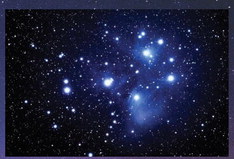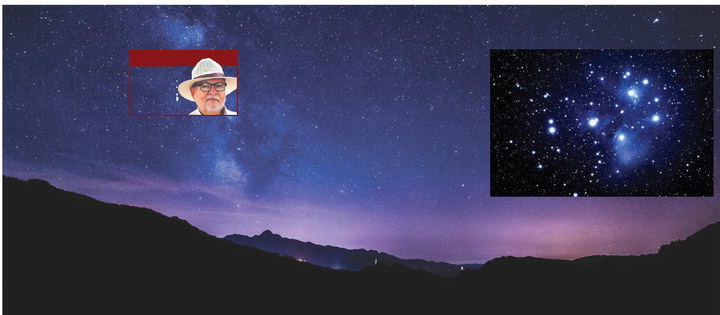 NIGHT SKIES
NIGHT SKIES
JACK ESTES
Hello fellow astronomy knuckleheads.
As is usual with this astronomy related science hobby, the sky/cloud gods tend to throw cold water on our nighttime observing plans. Such was the case with the Geminid meteor shower last December 13/14, with clouds and some rain (sigh).
My next-door neighbor messaged me in mid-December wanting to know what that small but bright cluster of stars almost directly overhead was called. It was the asterism known as the Pleiades or Seven Sisters. I then told her that the Subaru car company had a stylized version of the Pleiades on the front of every one of their cars. Pretty cool.
This isn’t a constellation; rather, it’s an open star cluster inside the constellation of Taurus the Bull. There are several asterisms scattered around the night sky, the most famous being the Big Dipper, which is a large asterism taking up most of the room of Ursa Major, the Great Bear.
Charles Messier gets the credit for cataloging this object, hence it’s official designation as M45. That was March 4, 1769.
Through time, this cluster has been used as a visual eyesight test. Most people can see only six stars though many can see nine. I can see seven, though I know exactly where the fainter star lies.
Actually, there are more than 500 stars in this cluster though 197 are regarded as true cluster members. There are 135 possible cluster stars in a 9-by-9 degree square which bring the actual dimensions as 70 by 15 LY (light year).
As I mentioned, it is one of the very nearest open clusters at 425 LY, considerably closer than the Beehive cluster near Leo. The innermost region, as covered by the naked eye stars, measures only 7 LY in diameter.
This photograph of the Pleiades was taken by a friend of mine, John Short, from northern England in December. Note the blue wispy interstellar dust cloud associated with the Pleiades.
This is obviously invisible to the naked eye. Current popular theory, which I don’t subscribe to, places the blue nebula on this side of the open cluster, i.e. it may not be a part of the Pleiades.
In that case the stars are moving behind the nebula. Taking into account the movement of the individual stars, the stellar members will go their own way in space within the next 250 MY.
As an aside, most stars -- including ours -- were born in a cluster of other stars. Our sun is, in fact, a part of the moving association of stars which includes the Big Dipper. A small pair of binoculars is the ideal way to view this cluster visually, though it’s certainly naked- eye visible from all around the globe.
Things happening in the January night sky: * New moon will occur on Jan 11, 2024.
* There will be a total lunar eclipse visible on Saturday, January 20, starting at 9:34 p.m. and ending 12:51 a.m. January 21. Totality starts at 10:41 p.m.
* Full moon occurs on Jan 25, 2024.










Comment
Comments